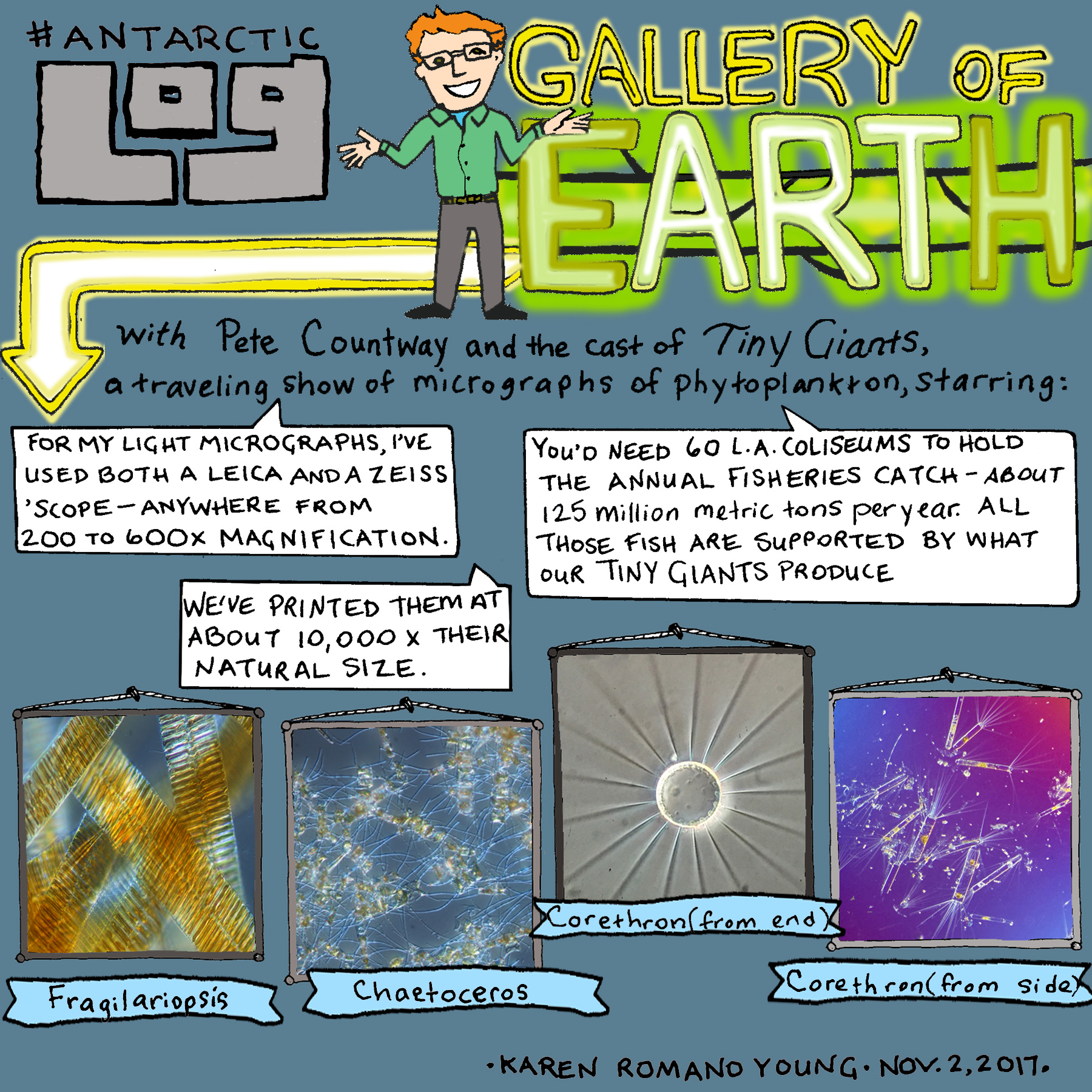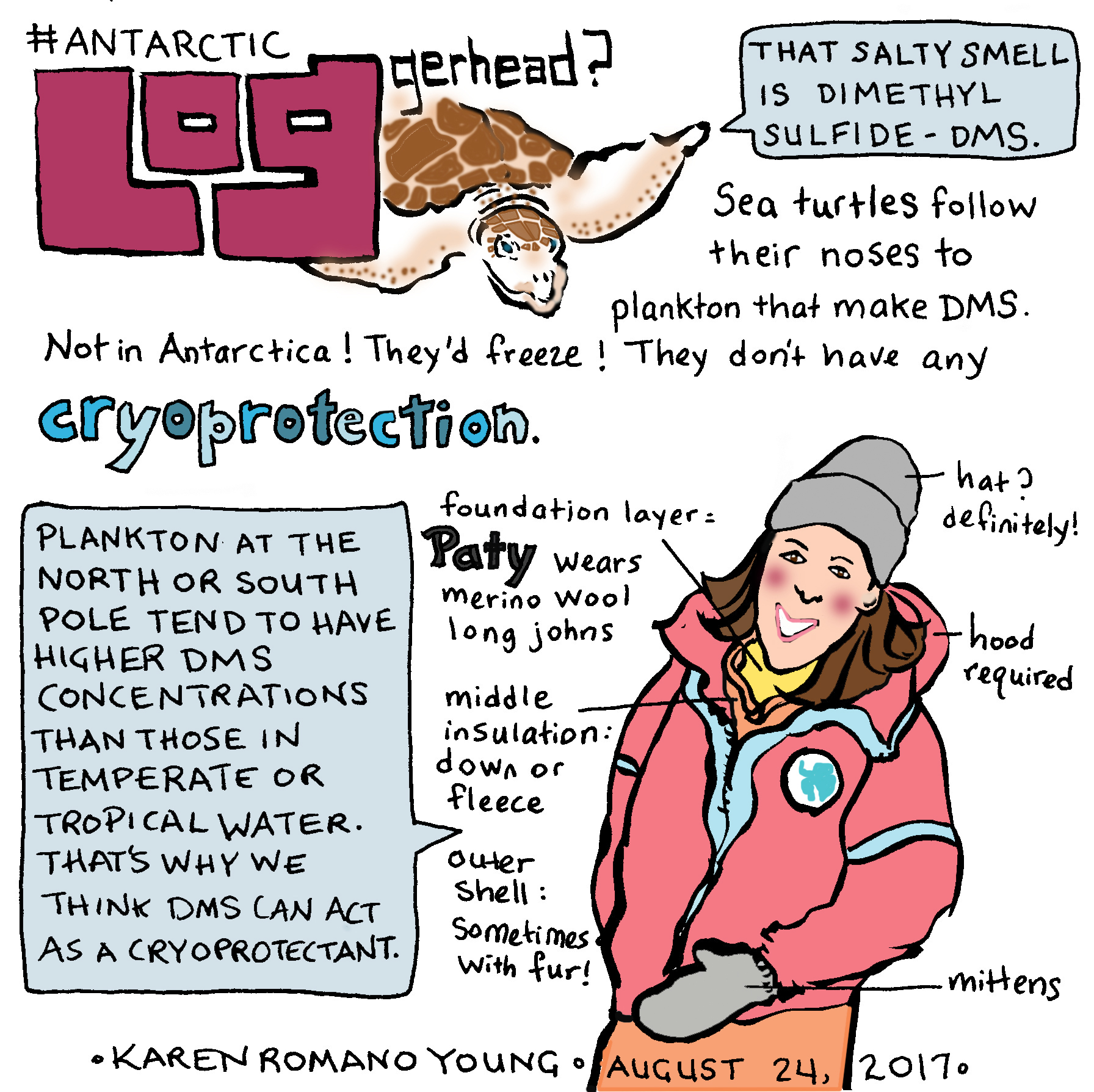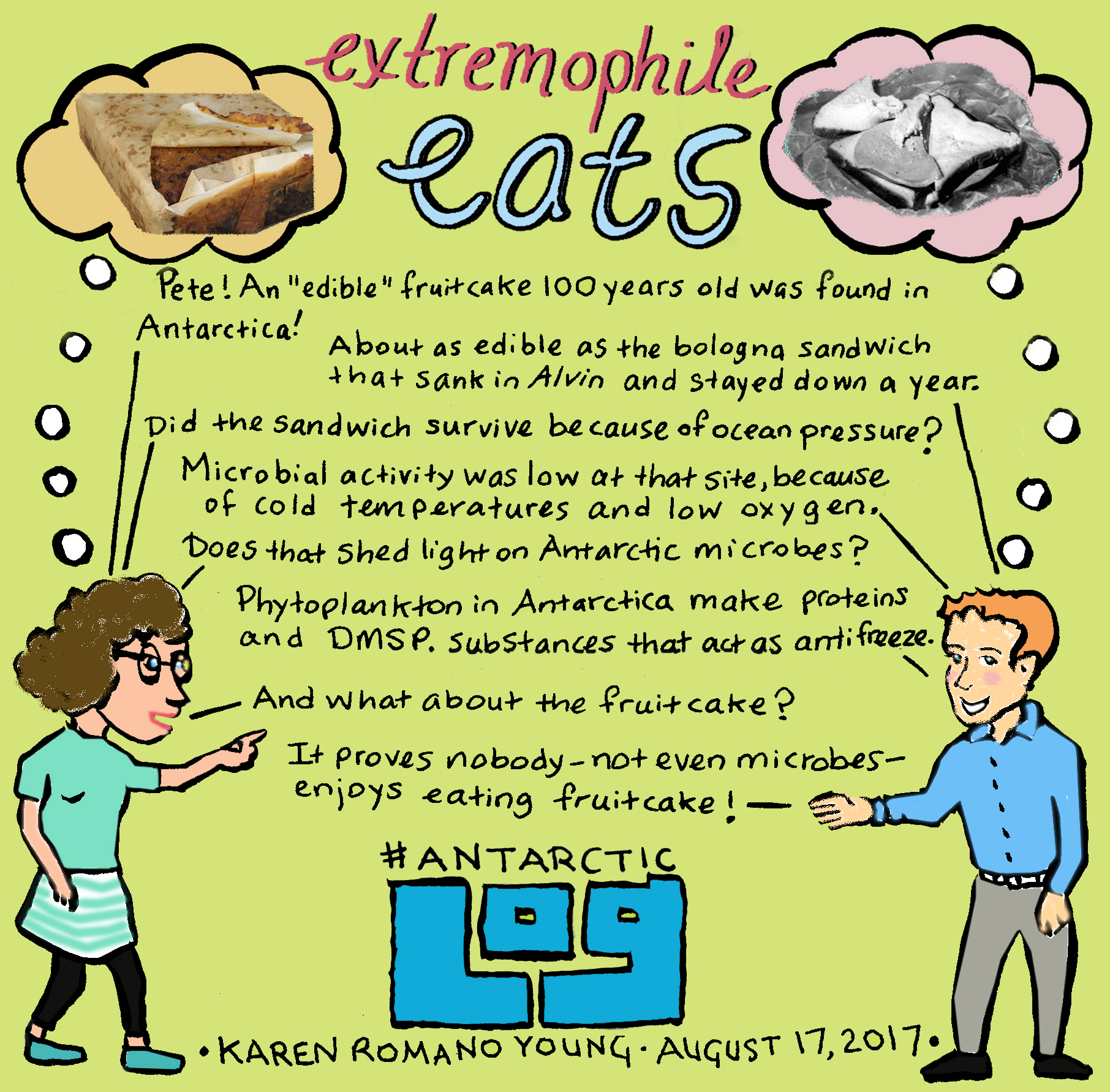21 May 2021
#AntarcticLog: Plankton is (surprisingly) cool
Posted by Shane Hanlon
#AntarcticLog is a series of comics by Karen Romano Young. You can find the originals here.
Before the pandemic, a long time ago (or so it seems), I used to go to New York City and wonder at all the people — and their brilliant personalities, ideas, forms, and functions — concentrated in that small space. One time I made my way to a midtown gallery where Pete Countway, a researcher at the Bigelow Laboratory for Ocean Science, had plankton on display.

Plankton? Those invisible microbes? Yes. Pete photographed them at magnification, resulting in gorgeous images of individuals that were unique as New Yorkers. When he brought me aboard his expedition to Palmer Station, Antarctica, along with his colleague and co-chief scientist Paty Matrai. They wanted me to use visual storytelling (comics!) to tell people about their invisible work. It helps that magnified plankton are so drop-dead gorgeous. Anyone could get hooked!
As if the microbes weren’t tiny enough, we would be studying something they produce — an airborne chemical that produces the smell of the sea. . . contributes to cloud formation . . . and even keeps the phytoplankton themselves alive in the supercold Antarctic environment.Here, Paty, tells how:

What’s more, microbes — such as plankton — played a role in the environment where Pete and I met, exploring deep sea hydrothermal vents on the East Pacific Rise, 1000 miles off Costa Rica. For me, telling invisible stories rely on this kind of visible hook — in this case, a bologna sandwich that sank with the submersible Alvin for almost a year, and came back to the surface intact. . . not that anyone wanted to eat it.

Next week, more on another visible, semi-edible food item in an extreme environment: fruitcake!
–Karen Romano Young is a writer, artist, deep-sea diver, and polar explorer. Follow her on Twitter & Instagram.










 The Plainspoken Scientist is the science communication blog of AGU’s Sharing Science program. With this blog, we wish to showcase creative and effective science communication via multiple mediums and modes.
The Plainspoken Scientist is the science communication blog of AGU’s Sharing Science program. With this blog, we wish to showcase creative and effective science communication via multiple mediums and modes.